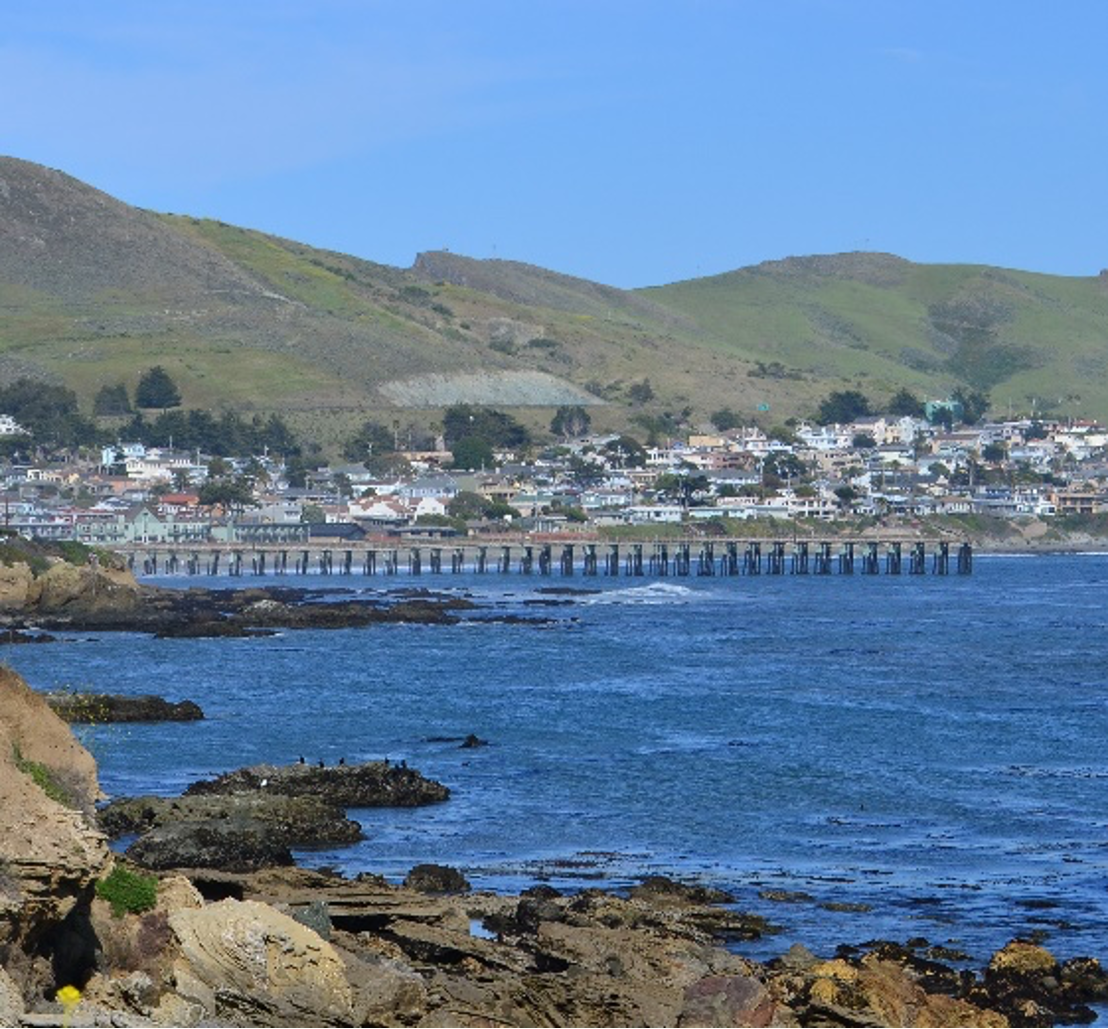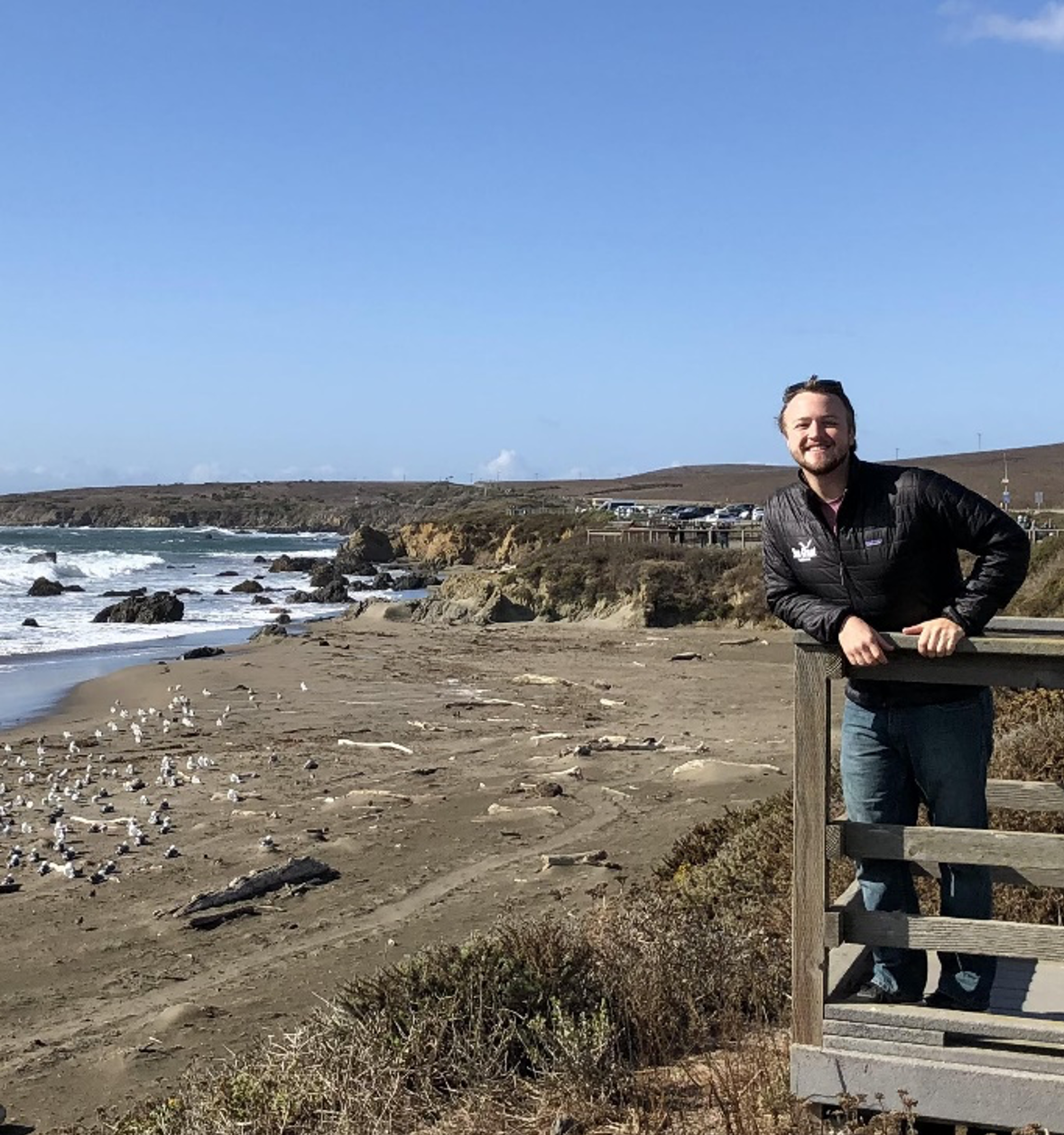When you hear the name State Lands Commission, that middle word can give you a good idea of what the focus is, right? Lands! Maybe that explains the confusion in my family and friends’ voices when I tell them that I, a marine conservationist and California Sea Grant fellow, am working at the California State Lands Commission. I usually hear “But doesn’t that focus on land issues?” The answer is yes, but not all land is dry.
 In California, the State Lands Commission is the body of state government responsible for the management and stewardship of public lands, which includes 4 million acres of submerged lands and waterways as well. Much of this submerged land is located on the coast, from the mean high tide line out to three nautical miles from shore, but it also includes navigable lakebeds and riverbeds. The commission manages these lands primarily through issuing leases for use or development, but there is a delicate balance to keep between development, ensuring public access, and preserving natural habitat. The guiding legal principle for the commission to balance these competing priorities is called the public trust doctrine.
In California, the State Lands Commission is the body of state government responsible for the management and stewardship of public lands, which includes 4 million acres of submerged lands and waterways as well. Much of this submerged land is located on the coast, from the mean high tide line out to three nautical miles from shore, but it also includes navigable lakebeds and riverbeds. The commission manages these lands primarily through issuing leases for use or development, but there is a delicate balance to keep between development, ensuring public access, and preserving natural habitat. The guiding legal principle for the commission to balance these competing priorities is called the public trust doctrine.
The public trust doctrine is the principle that public spaces and resources, such as beaches, tidelands, and navigable rivers are owned and shared by the public. Congratulations my fellow millennials, we are landowners! However, these lands and resources are managed by the state: an idea derived from English common law, where the sovereign monarch held the lands and resources in trust for the benefit of the people and future generations. This is where the term “sovereign lands” comes from. Historically, uses of these lands were limited to fishing, commerce, and navigation. The United States adopted aspects of English common law throughout its colonial history, and the public trust doctrine has expanded the uses of these lands and resources to include public access, recreation, and environmental protection.
 Throughout my fellowship at the State Lands Commission, I have found this little-known aspect of the law to be guiding almost everything I have worked on, from marine protected areas to aquaculture and offshore wind energy development. The State Lands Commission has a responsibility to the people of California to balance the competing public trust uses of fishing, commerce, navigation, public access, and environmental protection when it comes to decisions affecting submerged lands held in trust by the state. For example, planning for offshore wind energy development in California affects fishermen, shipping routes, and marine wildlife such as whales and birds. Balancing protections for these public trust uses with the ever-growing need for a renewable energy transition and a rising importance in the blue economy in California make the State Lands Commission’s responsibility more important than ever.
Throughout my fellowship at the State Lands Commission, I have found this little-known aspect of the law to be guiding almost everything I have worked on, from marine protected areas to aquaculture and offshore wind energy development. The State Lands Commission has a responsibility to the people of California to balance the competing public trust uses of fishing, commerce, navigation, public access, and environmental protection when it comes to decisions affecting submerged lands held in trust by the state. For example, planning for offshore wind energy development in California affects fishermen, shipping routes, and marine wildlife such as whales and birds. Balancing protections for these public trust uses with the ever-growing need for a renewable energy transition and a rising importance in the blue economy in California make the State Lands Commission’s responsibility more important than ever.
California’s blue economy refers to the sustainable use of ocean resources for economic growth and the livelihood of Californians, but also emphasizes the protection and health of ocean and coastal habitats. Planning for the continued development of California’s blue economy incorporates all aspects of the public trust doctrine and will require a careful balancing act to ensure maximum benefit to the people who use and depend on the ocean. A perfect example is the recent push for a more substantial commercial aquaculture industry, which is a critical aspect of our domestic seafood production but would have impacts to all the public trust uses mentioned above. Southern California was recently designated a region where the National Oceanic and Atmospheric Administration (NOAA) plans to identify aquaculture opportunity areas (AOAs), areas that are environmentally, socially, and economically suited to host commercial aquaculture. In state waters, the California Ocean Protection Council (OPC) is working collaboratively with the State Lands Commission to develop a series of statewide aquaculture principles to help guide environmental stewardship, manage public trust resources, and provide a healthy food supply by supporting commercial aquaculture development in California.
 As a Sea Grant fellow, I have had the chance to be at the forefront of marine spatial planning efforts such as aquaculture development and have gotten experience assisting state lands staff in these new challenges. Learning about the public trust doctrine and how the State Lands Commission balances the sometimes competing uses that are protected under it fascinates me. In a time when divisiveness is all too common between protecting the environment and supporting the economy, my experience working with the State Lands Commission seems increasingly valuable, as does understanding the public trust doctrine.
As a Sea Grant fellow, I have had the chance to be at the forefront of marine spatial planning efforts such as aquaculture development and have gotten experience assisting state lands staff in these new challenges. Learning about the public trust doctrine and how the State Lands Commission balances the sometimes competing uses that are protected under it fascinates me. In a time when divisiveness is all too common between protecting the environment and supporting the economy, my experience working with the State Lands Commission seems increasingly valuable, as does understanding the public trust doctrine.
Learn more about how the State Lands Commission is involved with marine spatial planning.




